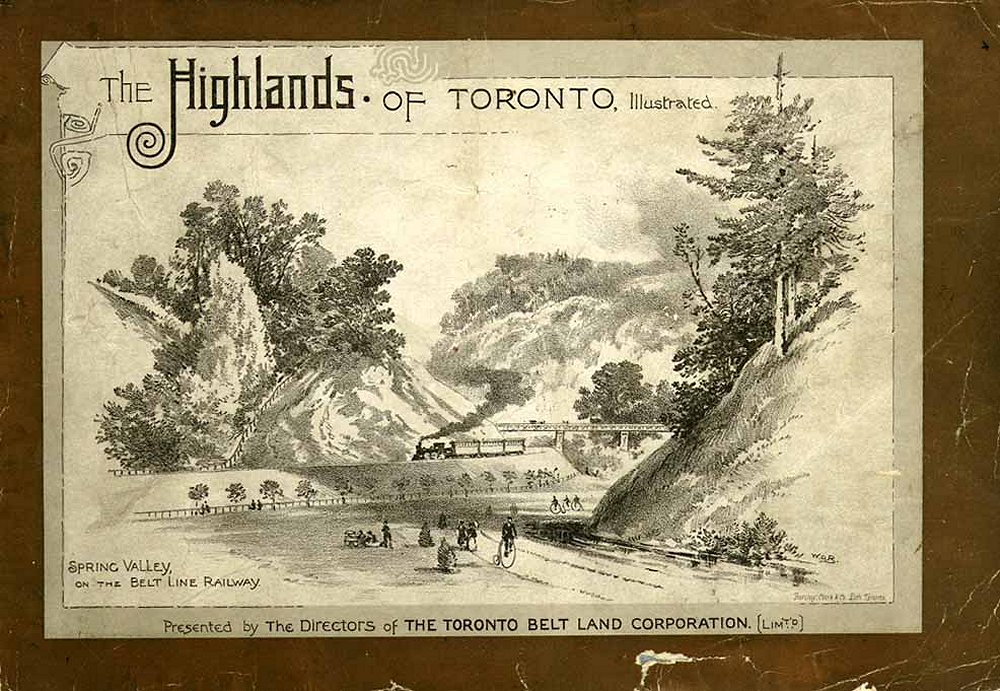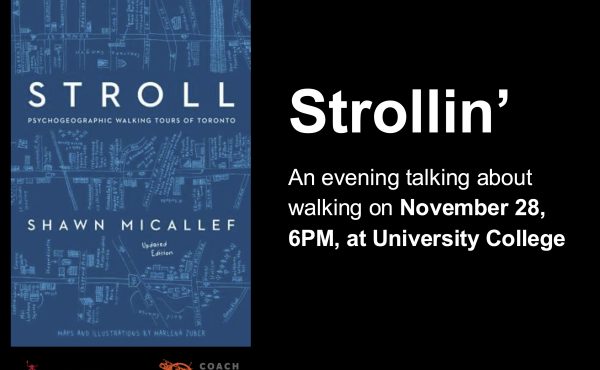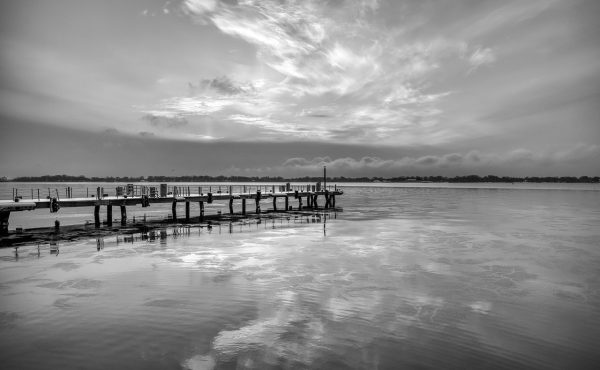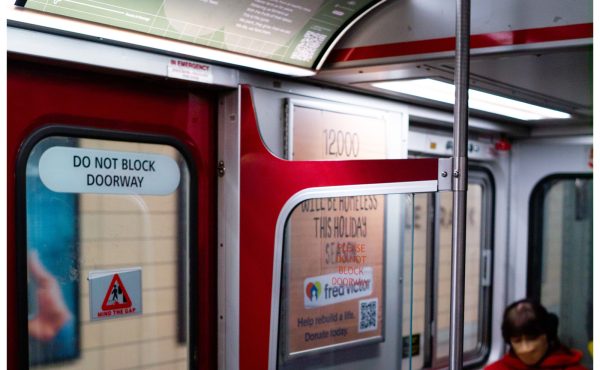

Every Thursday, Spacing will bring you a snapshot of Toronto’s past, looking into what took place that day in the city’s history. Throwback Thursday will address how the city has evolved, with an emphasis on issues that remain relevant for development in Toronto today.
– – – – – – – – – – – – – – – – –
On this day in 1889, the newly established Belt Line Railway held its inaugural meeting. The doomed railway would only run from 1892-1894, falling victim to both the 1893 depression and the faster, more direct Toronto Street Railway.
With two loops, the Belt Line Railway was to provide public transit service to Toronto’s suburban communities. The east loop started at Union station, ran east until turning north along the Don River, passing the Don Valley Brickworks, up through Moore Park Ravine and along the northern edge of Mount Pleasant Cemetery. Crossing over Yonge Street and what is now the Davisville Subway yards, the loop continued northwest until Spadina, where it intersected with Eglinton Ave. W and turned west, eventually meeting up with the Grand Trunk railway tracks just west of Caledonia Road. From their the route circled south back to Union Station.
The west loop was slightly shorter, also beginning at Union station but running west along Lake Ontario until Swansea, where it turned north at the Humber River following a route similar to the South Kingsway. The tracks turned east at Lambton, paralleling St. Clair West just north of the street until eventually meeting with the Grand Trunk lines at Caledonia which led it back to Union Station.
By July 1892, stream trains were running around each loop six times a day, charging five cents per station to a maximum of 25 cents. When it opened, the line became popular for middle class Torontonians, who took Sunday-afternoon trips along the Belt Line for a taste of the dramatic countryside. Real estate brokers were also frequent riders, using the line to show off the striking landscape surrounding the city to land speculators looking for development projects.
Now home to some of Toronto’s most prosperous neighbourhoods, it’s possible that the individuals who would go on to divide up and develop parts of Rosedale, Moore Park, Forest Hill, Bloor West and Swansea got their inspiration from a Sunday afternoon trip along the Belt Line Railway.

The photo above is the Moore Park stop, the Belt Line’s showpiece station. John Thomas Moore personally oversaw the station’s design and construction and is largely responsible for its grandeur. Being both a key stakeholder in the Belt Line Railway and major developer of Moore Park, Moore was looking to attract not only riders, but residents.


Despite its brief existence, the Belt Line Railway, unlike many other long-gone streetcar lines in Toronto, is remarkably well imprinted on the city’s modern urban landscape. Its off-road routes have largely escaped any major redevelopment and remain visible on Google Maps even in sections where the tracks were removed almost a century ago.
The loops are also memorialized through the concerted efforts of Torontonians who continue to make use of the lines. Although the Kay Gardner Beltline Park is the most well-known instance, the Don Valley section of the eastern loop is now a gravel bike trail. Parks also dot the east-west line running north of St. Clair West along the western loop, including Gaffney Park and the St Clair Gardens.


Although both lines were formerly filled with stations – based on the fee system, the more stops the train made, the more money the trip costed – now only one station still stands none now remain. Although not part of the Belt Line Railway, the Don Valley Station, built in 1896 on the sight of the Belt Line’s closed Queen Street East stop, still exists as a reminder of the era. First relocated to Todmorden Mills, the Don Station now resides on the John Street Roundhouse site as part of the Toronto Railway Heritage Centre.
For more information on the Belt Line Railway, see:
• Toronto Railway Historical Society
• Lost Rivers Website
• Don Watcher Blog
Photos from the Toronto Railway Historical Society and the Toronto Archives in order of appearance: (Fonds 1244, File 1244, Item 1109), (Fonds 1244, File 1244, Item 1109c), (Fonds 1231, File 1231, Item 1419), (Fonds 1231, File 1231, Item 1684).





3 comments
They are now talking about extending the Jane LRT south, maybe along or close to South Kingsway to the Queensway or the proposed Waterfront West LRT to downtown. In effect, the western leg of the Belt Line Railway reborn.
The Don Station (it was never known as the Don Valley Station) that currently resides at Roundhouse Park has no connection with the Belt Line. The Don Station was built by the Canadian Pacific Railway in 1896, two years after the Belt Line shut down.
The Belt Line did have a stop where the station was later built but this stop was known as Queen Street East, not Don.
There are no surviving stations of the Belt Line. The only surviving structures are the stone piers that support the Belt Line Trail bridge over Yonge Street.
Derek Boles
Toronto Railway Historical Association
In order to better appreciate the vision behind the promoters of the Belt Line Railway, it is important to understand that the two belts were not built to serve existing suburban communites, but as a means to promote and support new housing developments that were to be planned, built and sold by those very same backers of the Belt Line Railway. The venture failed due, at least in part, to a recession that depressed the real estate market that set in shortly after service commenced.
The Belt Line Railway and Lands concept was then, an attempt to use public transportation as a means to guide development.